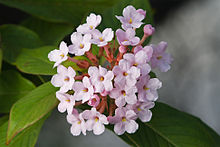Array
(
[0] => Array
(
[id] => 521
[is_published] => 1
[websiteID] => 5
[url] => /gardening/attracting-fauna-to-your-garden.php
[page_status] => Published
[number_of_ads] => 3
[can_use_editor] => 1
[last_modified_date] => 2013-09-16 00:00:00
[last_modified_by] => Alan
[checked_for_duplicate_content] =>
[title] => Attracting fauna to your garden
[heading] => Attracting fauna to your garden
[meta_description] => This article explains how you can attract native australian wildlife to your garden.
[article_category_1] => Gardening
[article_category_2] =>
[article_category_3] =>
[article_category_4] =>
[article_category_5] =>
[business_category_1] => Landscaper
[business_category_2] => Garden Maintenance
[business_category_3] => Garden Supplies
[business_category_4] => Garden Designer
[business_category_5] => Garden Tools
[number_of_google_mrecs] =>
[show_google_ad_bottom_of_page] =>
[show_get_quotes_top_of_page] =>
[show_get_quotes_rhs_of_page] =>
[show_directory_search_widget] =>
[show_trending_content_widget] =>
[show_facebook_widget] =>
[show_further_reading_section] => 1
[show_sponsors_section] => 0
[show_top_article_ad] => 1
)
[1] => Array
(
[id] => 486
[is_published] => 1
[websiteID] => 5
[url] => /landscaping/bullet-proof-landscape-plants.php
[page_status] => Published
[number_of_ads] => 1
[can_use_editor] => 1
[last_modified_date] => 2013-09-18 00:00:00
[last_modified_by] => Alan
[checked_for_duplicate_content] =>
[title] => Bulletproof landscape plants
[heading] => Bulletproof landscape plants
[meta_description] => Not all plants are equal. Many require the soil and climate (amongst other things) to be 'just right'. The plants described in this article are the ones that deserve the title of 'bulletproof' and are a good starting point for an easy-care garden.
[article_category_1] => Landscaping
[article_category_2] =>
[article_category_3] =>
[article_category_4] =>
[article_category_5] =>
[business_category_1] => Landscaper
[business_category_2] => Garden Maintenance
[business_category_3] => Garden Supplies
[business_category_4] => Garden Designer
[business_category_5] => Garden Tools
[number_of_google_mrecs] => 1
[show_google_ad_bottom_of_page] => 1
[show_get_quotes_top_of_page] => 1
[show_get_quotes_rhs_of_page] => 1
[show_directory_search_widget] => 1
[show_trending_content_widget] => 1
[show_facebook_widget] => 1
[show_further_reading_section] => 1
[show_sponsors_section] => 1
[show_top_article_ad] => 1
)
[2] => Array
(
[id] => 190
[is_published] => 1
[websiteID] => 5
[url] => /gardening/australian-native-trees.php
[page_status] => Published
[number_of_ads] => 5
[can_use_editor] => 1
[last_modified_date] => 2013-09-16 00:00:00
[last_modified_by] => Alan
[checked_for_duplicate_content] =>
[title] => Australian native trees
[heading] => Australian native trees
[meta_description] => Learn what Australian native trees you should I grow in your garden.
[article_category_1] => Gardening
[article_category_2] =>
[article_category_3] =>
[article_category_4] =>
[article_category_5] =>
[business_category_1] => Landscaper
[business_category_2] => Nursery
[business_category_3] => Garden Designer
[business_category_4] => Landscape Architect
[business_category_5] =>
[number_of_google_mrecs] =>
[show_google_ad_bottom_of_page] =>
[show_get_quotes_top_of_page] =>
[show_get_quotes_rhs_of_page] =>
[show_directory_search_widget] =>
[show_trending_content_widget] =>
[show_facebook_widget] =>
[show_further_reading_section] => 1
[show_sponsors_section] => 0
[show_top_article_ad] => 1
)
[3] => Array
(
[id] => 454
[is_published] => 1
[websiteID] => 5
[url] => /gardening/growing-banksias.php
[page_status] => Published
[number_of_ads] => 10
[can_use_editor] => 1
[last_modified_date] => 2013-09-16 00:00:00
[last_modified_by] => Alan
[checked_for_duplicate_content] =>
[title] => Growing Banksias
[heading] => Growing Banksias
[meta_description] => Learn how to grow Banksia in your garden.
[article_category_1] => Gardening
[article_category_2] =>
[article_category_3] =>
[article_category_4] =>
[article_category_5] =>
[business_category_1] => Landscaper
[business_category_2] => Nursery
[business_category_3] => Garden Designer
[business_category_4] => Landscape Architect
[business_category_5] =>
[number_of_google_mrecs] =>
[show_google_ad_bottom_of_page] =>
[show_get_quotes_top_of_page] =>
[show_get_quotes_rhs_of_page] =>
[show_directory_search_widget] =>
[show_trending_content_widget] =>
[show_facebook_widget] =>
[show_further_reading_section] => 1
[show_sponsors_section] => 0
[show_top_article_ad] => 1
)
)
Helpful articles
Attracting fauna to your garden. This article explains how you can attract native australian wildlife to your garden.
Bulletproof landscape plants. Not all plants are equal. Many require the soil and climate (amongst other things) to be 'just right'. The plants described in this article are the ones that deserve the title of 'bulletproof' and are a good starting point for an easy-care garden.
Australian native trees. Learn what Australian native trees you should I grow in your garden.
Growing Banksias. Learn how to grow Banksia in your garden.
Plant description
Luculia are beautiful, fragrant flowering tender shrubs, originating from elevated forest regions of the Himalayas. Though they can be difficult to grow, the exquisite perfumed trusses of flowers and attractive foliage make them worth the attempt.
Luculia prefer a sheltered position with lots of organic matter in the soil and a cool root run. They can be susceptible to root rots. They can be pruned to shape.
There are five species of Luculia, and they are in the same family as gardenia and coffee.
Additional plant information
Flowers
Flower colour: pink, white , red
Flowering season: summer
Scent
Luculia has a heady sweet perfume
Plant size
Maximum height: 5 metres
Minimum height: 3 metres
Maximum width: 2 metres
Minimum width: not specified
Sunlight, frost & salt tolerance
Will tolerate partial sunlight.
Light frost tolerance.
Plant is not salt tolerant.
Fauna attracting?
Yes. Attracts: Butterflies.
Climate
This plant species will grow in the following climates: cool, temperate, subtropical.
Soil types & conditions
Loam: moist, well-drained.
Clay: moist, well-drained.
Sand: moist.
Soil pH: 6-6.5
Diseases
Root rots
Pests
Aphids
Miscellaneous information
Planting season: spring.
Types of fertiliser: Good general purpose.
Find a nursery
Search for another plant

